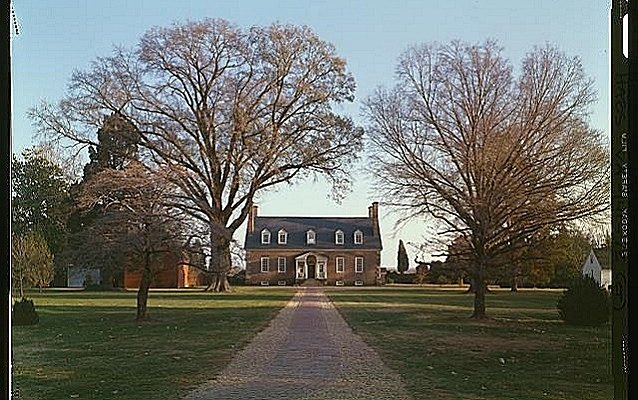Last updated: August 11, 2017
Place
Gunston Hall

Born in 1725, George Mason was the fourth of that name and line in Virginia. In 1735, as a child, he inherited a 5,000-acre parcel of land. In 1750 he married Anne Eilbeck of Charles County, Maryland. They began construction of their manor house, Gunston Hall, in 1754. Mason himself planned the shape of the building, the floor plan, and the materials of construction. In 1755 his brother Thomson Mason brought 21-year-old William Buckland to Gunston Hall on a four year indenture to do the woodwork. The house was completed in 1758 and remains a magnificent example of the joiner's art. The public rooms possess elaborate decorations of unusual beauty. The grounds south of the house are richly landscaped.
Mason was extraordinarily averse to holding public office, but he served in the House of Burgesses in 1759 and again in 1775, replacing George Washington after the latter was appointed Commander-in-Chief of the Continental Army. Mason’s major contributions to the cause, however, were intellectual. From the time of the passage of the Stamp Act (1765), he had been engaged in an expanding defense of colonial rights. Mason was valued as an adviser by many Virginians seemingly more active in revolutionary events. In 1775 he served on the committee of safety which governed Virginia after the flight of Colonial Governor Lord Dunmore. His 1776 Virginia Declaration of Rights was perhaps his most influential document, directly influencing Thomas Jefferson's drafting of the Declaration of Independence and the revolutionary debates in France.
While he served in the Virginia Assembly, Mason worked for the disestablishment of the Church of England, helped to organize defense measures for the state, as well as Virginia-claimed land in Kentucky and the Northwest, and served on the secret committee which approved George Rogers Clark's conquest of the Northwest. He also became a member of the Constitutional Convention of 1787. Mason disagreed with the proposed constitution, which failed to immediately outlaw the slave trade, gave too much power to Congress, and had no Bill of Rights. He refused to sign it. Leaving the convention disillusioned, Mason refused to be drawn back into the public arena, preferring instead to live his life out at Gunston Hall. In 1789, James Madison would propose amendments to the Constitution, which collectively became called the Bill of Rights.
Mason died at Gunston Hall on October 7, 1792. The house remained within the Mason family until 1867. After a series of owners, Louis Hertle purchased the property in 1912. In 1932, he conveyed title to the Commonwealth of Virginia in fulfillment of his late wife’s wish that the plantation be preserved as a shrine to the ideals of George Mason. Today, the National Society of Colonial Dames maintain the house and grounds, about one-tenth of the original Mason holdings. The land and mansion preserve the memory of Mason’s contributions to American ideals and Buckland’s influence on American architectural design.
National Historic Landmark Nomination of Gunston Hall.
National Historic Landmarks (NHLs) are historic places that possess exceptional value in commemorating or illustrating the history of the United States. The National Park Service’s National Historic Landmarks Program oversees the designation of such sites. There are just over 2,500 National Historic Landmarks. All NHLs are also listed in the National Register of Historic Places.
